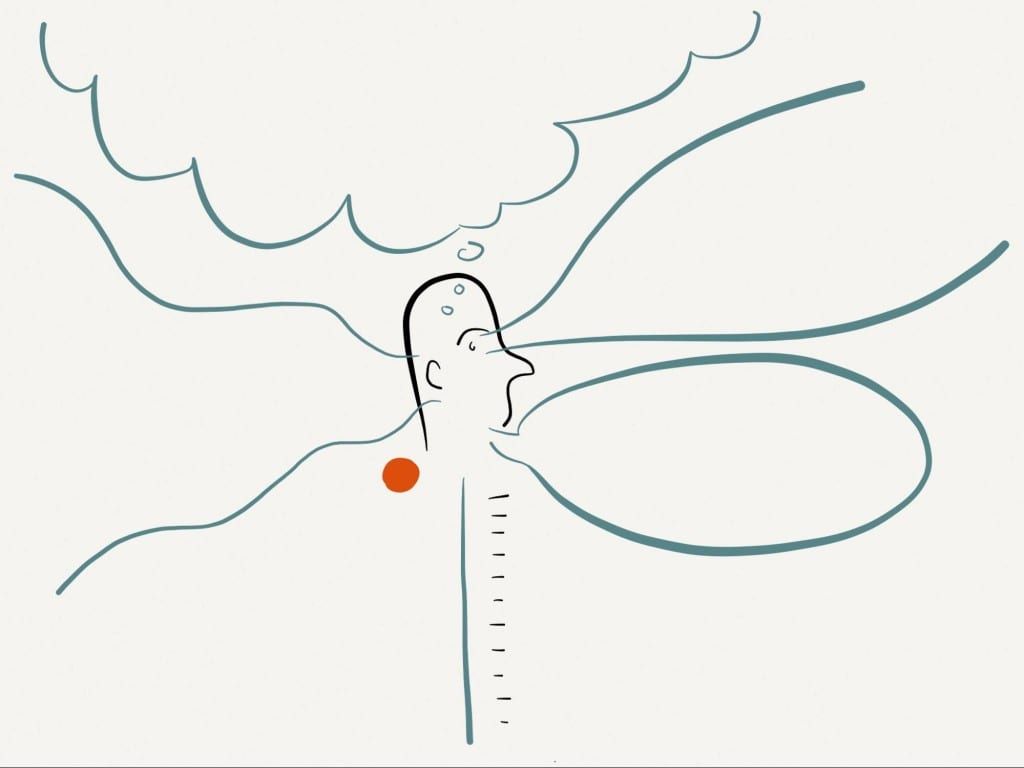To succeed as a UX professional, you need to master the UX mindset as much as the skillset.
In this post, we’ll explain four things you will never hear a UX designer say to give you an idea of responsibilities, but more importantly, the appropriate UX mindsets. We’ll also be covering the importance of undertaking user testing and research as part of the UX design process, and discussing the empathy and curiosity needed to succeed in the industry.
1.“That looks fine to me”
As we explained in our career guide, a UX designer will never judge the success of a product or website based on their own opinion or personal set of preferences.
They are first and foremost interested in how the product serves its users, and will not be swayed by their own personal taste alone. By performing extensive research into a product and its field, a UX designer is able to identify the core group of users for a product (either when redesigning or creating a new product).
As explained in the Guide to UX Design Process & Documentation, designers funnel this information into their personas. Personas are fictional characters who embody many of the traits found in a significant number of the real end-users. Target personas give the UX design team the voice of the user when it comes time to make difficult decisions.

Photo credit: GD Steam. Creative Commons.
Much of UX design work revolves around balancing the user needs (reflected in the persona) with business needs (reflected in the product documentation).
- Invest in creating rapid proto-personas. As Lean UX expert Jeff Gothelf recommends, the process of understanding users is much more important than creating a polished deliverable. Get your team in a room and start creating a quick outline of the user’s behaviors, goals, and beliefs.
- Follow a “problem-first” approach to product design. UX strategies must derive from solving a user problem, not from fulfilling requirements. Requirements grow from the user. The first step of any design project should always involve customer interviews to ensure you’re designing for the right problems before designing the product right.
2. “I’ve got a hunch”
A UX designer will never, ever work on assumption. A hunch is a mistake waiting to happen.
No matter how strong the hunch of the product team, the sales team or the CEO herself, a UX designer will never work off ideas that weren’t validated through usability testing. Although this is similar to not making decisions based on personal preference, working on a hunch is a slightly easier trap to fall into.
Why? Because a lot of the time we think we know what other people want, without actually asking them.
If we can conjure up an image of User A or User B, we think we can imagine what it’s like to be them, slip into their shoes and make decisions on their behalf. Even if we survey or interview users, that qualitative data is only half of the picture.
To see the full view of reality, you need to test your designs. Testing repeatedly proves that what users say they do can differ drastically from what they actually do.

Photo credit: Alissa Briggs via Enterprise UX Conference
However, hunches are not all bad. Keep in mind that a hunch can be a great place to start testing from, but a product decision should never stem from one.
- Practice hypothesis-driven UX design. What exactly does your hunch look like, what will you do to test it, and what metrics will validate or invalidate your assumption?
- If you’re short on time or money, even quick guerilla usability testing is better than nothing. Recruit 5 users who match your persona, assign some core tasks for them to complete, then record the testing session. Share the recording and insights with the whole team, highlighting which assumptions were validated or proven false.
3. “Users just don’t understand”
Familiarity with technology has become something of an unwritten requirement these days.
But for those with less experience, this can lead to plenty of self-blame by the user when the fault lies with the design. A website should never be designed with only the technologically-minded in mind.

Photo credit: Zak Greant. Creative Commons.
As described in the e-book Interaction Design Best Practices, every design must always fulfill two criteria:
External Consistency – Is the design consistent with the user’s previous experience? Does it follow mental models demonstrated by products in the same category?
Internal Consistency – Is the design consistent with itself? Does the site reflect good visual hygiene?
That’s why UX designers create websites using familiar positions of buttons, clear icons and commonly-used search bars so that important actions are quickly identifiable for both those often online, and those not.
Clarity trumps cleverness every time. Understand how to apply the right UI patterns explained in Web UI Design Best Practices, then add your own creative twist. Otherwise, creativity without consistency only leads to confusion.
- Use at least 3 other products that are similar to your own. Learn their onboarding process, complete core tasks, and internalize any similarities in the interface. The knowledge serves as a useful baseline for your own design. You can then draw inspiration from other sources (even offline) to differentiate the product.
- Designs can be low fidelity, but they must always be consistent. Is every block of text legible and readable? Does the navigation menu change at all from page to page? Review your work for typographic, color, interaction, and visual consistency before sending to others or testing with users.
4. “I can’t stand these people”
At it’s core, design is about solving human problems with humane solutions.
If you aren’t genuinely curious about how to improve people’s lives, you won’t make it very far in UX.
The majority of a UX designer’s time is spent talking to, questioning, and interacting with users to learn about their problems. The remaining time is then spent designing, testing, and defending the best solution. No easy feat if you’re a misanthropist.

Photo Credit: Quantcast
As we emphasize in our UX Design courses, empathy must work both ways. As a designer, you also need to empathize with internal stakeholders if you want to fulfill user needs. Every organization comes with its own set of politics that stem from people’ self interest. Unless you can understand your coworkers like you understand your users, you’ll never champion your ideas appropriately.
The best designers aren’t just technically skilled. They’re fantastic design facilitators. They know know how to teach design thinking skills so that others also look good.
- Instead of running meetings all the time, consider running a workshop. For instance, the design studio exercise helps everyone sketch out rough solutions to a problem based on their own experience. As a designer, you start to see people’s perspectives manifested visually.
- Master the art of follow up questions. For instance, Dustin Curtis’ 3-question rule is especially useful for clarifying feedback with users and stakeholders.
Next Steps
Mindset always determines how far you’ll advance in your skillset.
When it comes to succeeding in UX design, you must remain curious, empathetic, and scientific in your approach to problem-solving. Clarify every question, understand who’s asking and why, then validate your proposed solutions.
When you combine the scientific method with a strong understanding of psychology, you start designing sustainable solutions to business and user problems. You become the designer who’s voice matters in the boardroom.
For more best practices in the UX mindset and skillset, check out the free Guide to UX Design Process & Documentation. Downloaded by over 65,000 people to date, the 100+ page e-book explains how to tackle every stage of the UX process based on examples from top companies.



